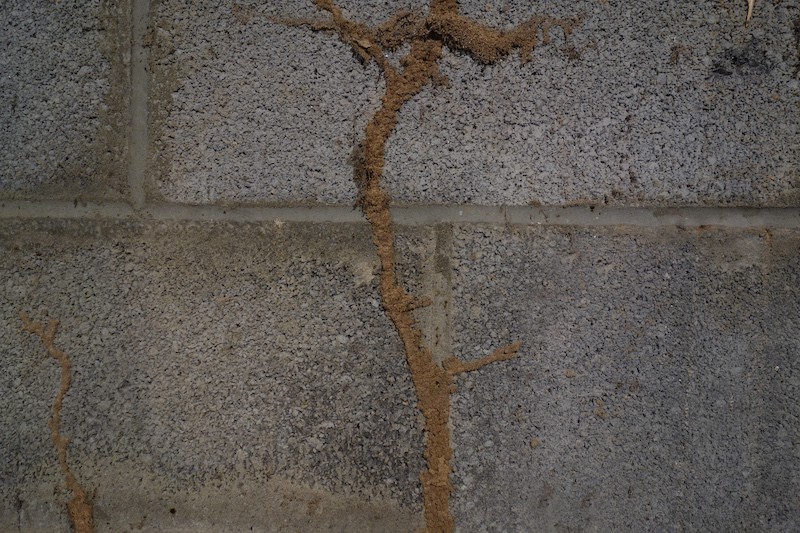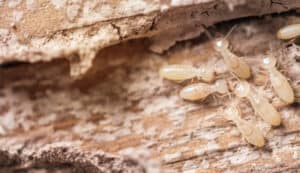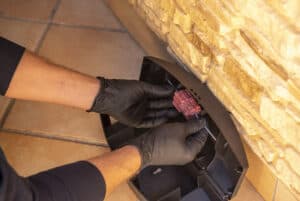With the risk of termite damage a significant threat to homes, knowing the signs of termites is essential for all homeowners.
The main pest termites in Victoria are subterranean termites – they tend to build their nests underground and indeed spend most of their time underground and out of sight. This makes them difficult to spot and why professional termite inspections are essential. However, it helps to know the signs of termite activity, so homeowners can spot a potential problem, should it arise in between termite inspections.
How to spot termites: 3 signs of identification
Identifying signs of termites comes down to three things: spotting the termites themselves, or wings they’ve shed; identifying mud tubes or termite mud; or noticing evidence of the damage they have caused.
1. Termites and/or termite wings
Termites are often called “white ants” as they superficially look like pale coloured ants, but they are actually quite different on closer inspection. But the colour is certainly a good giveaway. But for most homeowners, the termites they are more likely to see each year are the flying termites.
Termites spend most of their time underground, except for once a year, around springtime, when they take flight. On warm, humid nights, new termite kings and queens ‘swarm’ on their mating flight and are attracted towards sources of light. During the flight, the kings and queens pair up, shed their wings and try and start a new colony wherever they land. It can be quite unsettling to wake up one morning to see piles of wings on the ground or pale brown insects wandering around! If you spot a swarm of flying insects or see piles of wings, it is important to arrange for a termite inspection straight away. Not only does it mean a large termite nest is nearby, but it also means pairs of termites are currently scouring the area looking for the ideal spot to create a new nest.
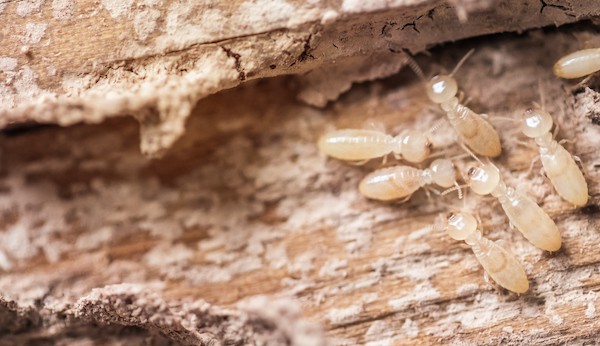
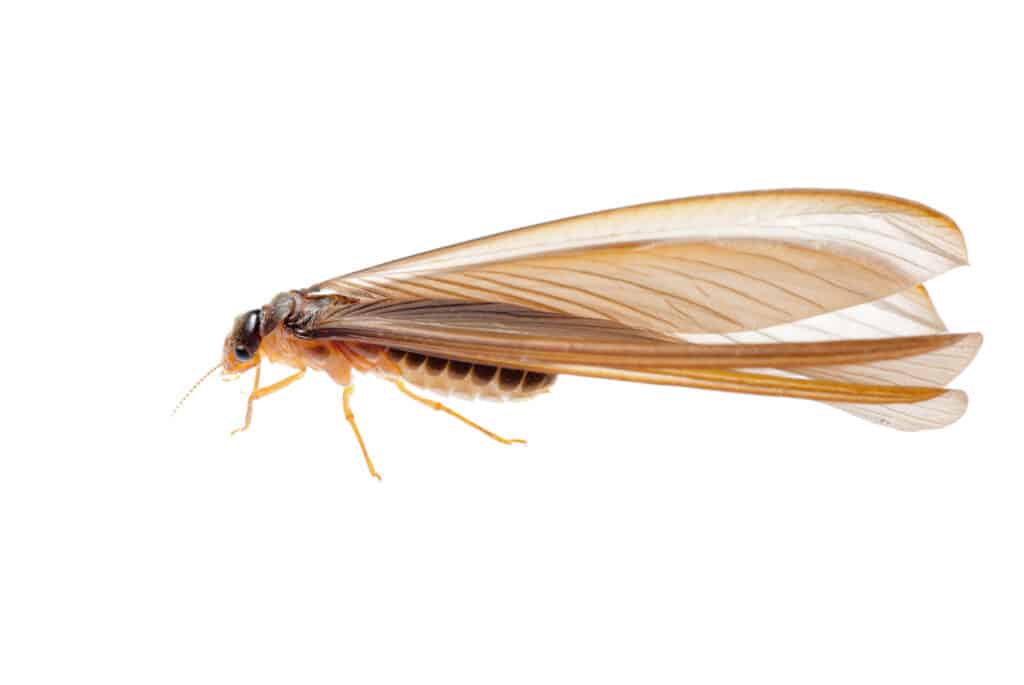
2. Termite mud and mud tubes
Termites need warmth and moisture at all times. So when they need to travel above the ground or feed on a wood source, they build mud tubes to travel in, protect them from drying out and predators too. Mud tubes can be quite easy to spot when they are against a plain or white background, such as interior walls. But as termites like to keep hidden from view, noticing these mud tubes in a dark subfloor or roof void is much more challenging. In the yard look for mud tubes on trees and fencing.
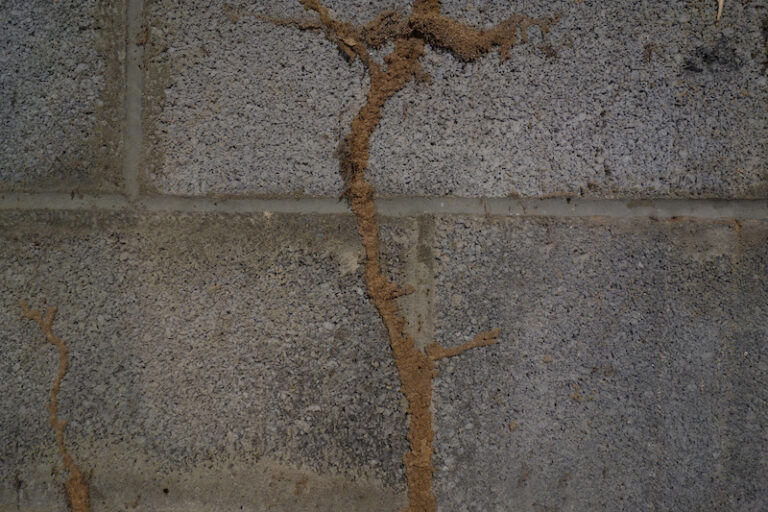
3. Damage to timber features
As termites start to eat wood, signs of damage to timber will start to emerge.
It becomes hard to open windows and doors
Once termites feed on a wood source, such as window frames or door jambs, the strength of the wood becomes compromised. This means doors and windows can gradually become difficult to open and close, as the timbers start to bow slightly as the structural integrity of the timber becomes affected.
Floors feel bouncy or ‘spongy’
The floor joists and floorboards make a great food source for termites. Wooden floors can start to feel bouncy when walked upon as termites slowly consume the supporting timbers. Bouncy floors can also indicate other structural issues in the subfloor, but it’s a good reason to have a professional inspection, either way.
Timber appears hollowed out
The idea of termites hollowing out a piece of wood sounds like it would be obvious to spot, but that’s not necessarily the case when the wood is around the home. When consuming wood, termites will often leave a thin layer of wood on the surface, protecting them from view, keeping them moist and out of reach of predators. If you suspect that your wooden joinery or skirting boards are looking unusual, give them a tap – a hollow sound will indicate that termites have eaten the insides.
As well as these visually clues, termites also make noises, too. A repeated tapping sound can sometimes be heard, which is the sound of termites communicating with each other. These sounds can be easier to hear at nighttime, when the rest of the home is quiet.
Sound familiar? Here’s what to do
If you think you may have spotted any of the signs of termite activity above, it’s a good idea to give the professionals at Go Pest a call.
Important note: If you spot any potential signs of termite activity, don’t panic. The most important thing is not to disturb the termites. This means not touching any mud tubes or damaged wood. It also means not spraying termites with insecticide or fly spray, as doing this will disrupt their normal behaviour and make it more challenging to control. We will carry out a comprehensive termite inspection and if you have termites, leave it to us to get the problem under control quickly with our trusted termite treatments, with full warranty.

